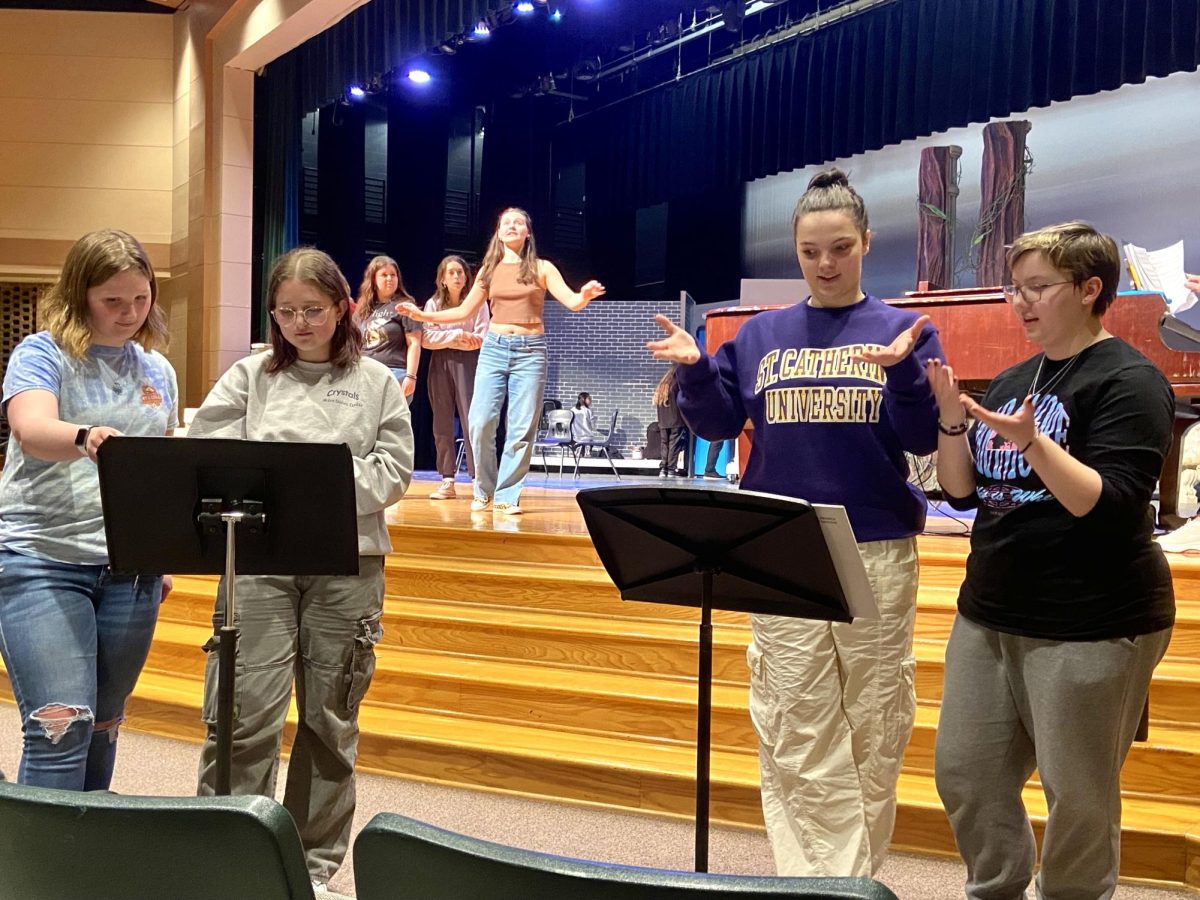[DEBATE] Should legacy admissions still exist?
After our oh-so benevolent Supreme Court justices outlawed affirmative action, discontent Americans gather at the gates of the Marble Palace with their pitchforks and torches, licking their lips at the prospect of their next kill. But these righteous, equality-seeking activists are only hungry for one thing: legacy admissions.
But these protestors are misguided. It’s false that legacy admissions decrease equality in higher education. In fact, legacy admissions may be one of the best promoters of it.
When addressing the debate over legacy admissions, it’s first important to understand how the often misunderstood system works. Let’s get this straight: legacy applicants are not taking spots away from poor rural students or applicants from low-income families. In most cases, legacy students are competing against equally privileged applicants of similar socioeconomic standing. If legacy student A’s family makes $200,000 per year, they will be compared to applicants from families that also make around $200,000 per year.
While legacy students may have an admissions advantage over these equally privileged applicants, these applicants have the resources to succeed at whatever school they end up attending. The rhetoric that legacy admissions promote class inequality is false, and misinformation about the system leads to continued misunderstanding.
Legacy admissions are also essential to the invaluable community found at prestigious universities. Even after graduation, when these legacies become alumni, they stay involved in the community. Alumni are far more likely to stay engaged with their old college if their whole family is a part of that community too. This community creates a strong pool of donors and educators who continuously give back to the university. But this sense of community doesn’t only benefit legacy students — the extensive network created by legacy alumni also benefits less privileged students with few connections.
An important thing, if not the most important thing to consider when debating the necessity of legacy admissions, is the economic advantage the system offers to universities. A report published in the American Sociological Review found that one unnamed top-25 university had many financial incentives to continue legacy admissions, including a higher matriculation rate for accepted legacy applicants. While 74% of accepted legacy students enrolled, only 47% of non-legacy students decided to attend. Higher matriculation rates, or higher yield rates, benefit colleges for two reasons: They increase colleges’ U.S. News ranking, and they allow schools to more accurately predict their tuition revenue and student expenses.
Additionally, legacy students are more likely to donate to their old universities. Over a 16-year period at the unnamed university, 42% of legacy graduates became top donors, while only 6% of non-legacy graduates became top donors. Big donors mean larger endowments, and larger endowments mean that universities are able to provide higher quality education, utilize the latest technology and perform cutting-edge research — all things that don’t just benefit current students. Often, colleges with many donors are also able to provide far more financial aid to less privileged students, increasing the diversity on campus.
The outcry against legacy admissions is understandable, but it comes from a place of hate for the privileged rather than out of concern for the less fortunate. Removing legacy admissions would likely only perpetuate the inequalities found in higher education and would inevitably dismantle many of the essential resources that prestigious universities offer to less privileged students.
According to The New York Times, applicants with family members who attended a particular institution often experience significantly higher acceptance rates. This preference tends to favor wealthier candidates, creating an imbalance in admissions and compromising overall fairness. Legacy admissions in the United States are a troubling and unfair practice. It’s time to get rid of this unethical system that creates inequality and hinders equal opportunity in higher education.
Removing legacy admissions will increase access to prestigious universities. For example, Johns Hopkins discontinued legacy admissions at the school in 2020. Since then, they have had a decline in the number of admissions from family connections, from 8.5% to 1.7%, and the admission of first-generation and limited-income students rose from 16.7% to 30.8%. The equality that can occur is quite clear. By removing legacy admissions, colleges can provide a more equitable opportunity for all applicants.
Legacy applicants are two to three times more likely to be accepted, yet both legacy and non-legacy applicants’ merit achievements are indistinguishable. A report published in the American Sociological Review on one unnamed top-25 university found that legacy students’ involvement in campus activities, merit awards, academic recognition and on-time graduation rates were virtually the same as those of non-legacy students.
According to the BBC, 70% of legacy applicants are white, revealing a clear racial difference in legacy admissions. The recent rollback of affirmative action only worsens the situation, risking a decline in diversity in higher education. Colleges would benefit from increasing the diversity of their student population as diversity enriches the educational experience. Students of diverse institutions can learn from students with perspectives, beliefs and backgrounds dissimilar to their own. Learning from other perspectives is important to promoting creativity, and it helps students learn to work with people they may not necessarily relate to.
Additionally, legacy admissions were initially adopted by prestigious universities, in the words of Abbott Lowell, president of Harvard University from 1909–1933, “to prevent a dangerous increase in the proportion of Jews.” Both holistic admissions and legacy admissions were adopted by Harvard and other schools to reduce access to non-white and Jewish applicants. Legacy admissions worked to prevent the acceptance of Jewish applicants as legacy applicants generally came from white, Anglo-Saxon Protestant families. Legacy admissions continue to perpetuate the discrimination that it accomplished a century ago, even more so in the absence of affirmative action.
One of the leading arguments for retaining legacy admissions is the increase in alumni donations, yet colleges that have discontinued legacy admissions have observed a boost in their endowments. According to the New Yorker, these colleges haven’t seen a decrease in alumni donations; in fact, some have witnessed an expansion of their endowments. This illustrates how eliminating legacy admissions won’t necessarily financially hurt colleges, and colleges should still be able to allocate enough resources to student aid, academics and athletics.
Legacy admissions are a clear case of discrimination, where equal opportunity is denied to many applicants. Colleges must understand this injustice and work towards a more equal application process, which in turn could potentially help the college.
-
 Award-winning articlesFounding the bell scandal
Award-winning articlesFounding the bell scandal -
 Award-winning articlesSpiraling towards success
Award-winning articlesSpiraling towards success -
 Award-winning articlesMen of Character: local blockbuster
Award-winning articlesMen of Character: local blockbuster -
 Award-winning articlesArtistic talent on display in new mural
Award-winning articlesArtistic talent on display in new mural -
 Award-winning articlesFreshman Linnea Ousdigian: National Nordic champion
Award-winning articlesFreshman Linnea Ousdigian: National Nordic champion -
 Award-winning articlesSoundless storytelling: ASLHS to interpret spring musical
Award-winning articlesSoundless storytelling: ASLHS to interpret spring musical -
 Award-winning articlesCommunity spreads support for Evan Kirkland
Award-winning articlesCommunity spreads support for Evan Kirkland -
 Award-winning articles[COLLECTION] The rise of sports betting
Award-winning articles[COLLECTION] The rise of sports betting -
 Award-winning articlesMounds View Theater casting sparks controversy
Award-winning articlesMounds View Theater casting sparks controversy -
 Award-winning articlesThe downfall of ELA education
Award-winning articlesThe downfall of ELA education -
 Debates[DEBATES] Should we de-extinct species?
Debates[DEBATES] Should we de-extinct species? -
Debates[DEBATES] The GMO dilemma
-
 Debates[DEBATES] Reevaluating Primary Care Pay
Debates[DEBATES] Reevaluating Primary Care Pay -
 Debates[DEBATES] Is tipping outdated?
Debates[DEBATES] Is tipping outdated? -
![[DEBATES] Prestigious colleges: value or hype?](https://www.mvviewer.org/wp-content/uploads/2024/12/buildings-1200x654.png) Debates[DEBATES] Prestigious colleges: value or hype?
Debates[DEBATES] Prestigious colleges: value or hype? -
 Debates[DEBATES] The vote split: People vs. process
Debates[DEBATES] The vote split: People vs. process -
 Debates[DEBATES] "Don't wake the demon up"
Debates[DEBATES] "Don't wake the demon up" -
 Debates[DEBATES] "It's just Big Me"
Debates[DEBATES] "It's just Big Me" -
![[DEBATE] Should advanced classes be eliminated?](https://www.mvviewer.org/wp-content/uploads/2024/01/Untitled161-2-1200x796.png) Debates[DEBATE] Should advanced classes be eliminated?
Debates[DEBATE] Should advanced classes be eliminated? -
![[DEBATE] What’s better? Coed vs single-gender schools](https://www.mvviewer.org/wp-content/uploads/2023/12/Untitled153_20231215153759-1-1200x405.png) Debates[DEBATE] What’s better? Coed vs single-gender schools
Debates[DEBATE] What’s better? Coed vs single-gender schools -
 OpinionPublic attitudes affect online fueds
OpinionPublic attitudes affect online fueds -
 Opinion[SATIRE] Why birds aren't real
Opinion[SATIRE] Why birds aren't real -
Opinion[OPINION] Passion meets awareness in railfanning
-
Opinion[OPINION] Higher education fails us
-
Opinion[OPINION] America’s second Gilded Age?
-
 Opinion[OPINION] Move free hours back to the library
Opinion[OPINION] Move free hours back to the library -
Opinion[OPINION] Dressing revealing is not "sexually liberating"
-
 Opinion[OPINION] Women and Earth pay the price
Opinion[OPINION] Women and Earth pay the price -
Opinion[OPINION] How social media has ruined feminism
-
 Opinion[OPINION] The truth about the "War on Christmas"
Opinion[OPINION] The truth about the "War on Christmas"







![[DEBATE] Should legacy admissions still exist?](https://www.mvviewer.org/wp-content/uploads/2023/12/IMG_1460.jpg)